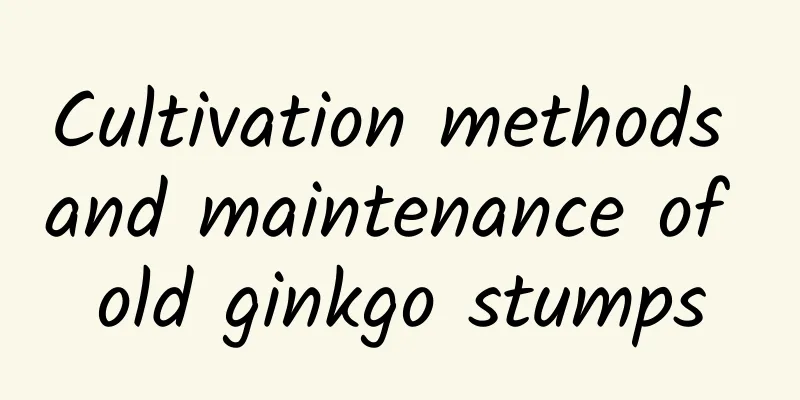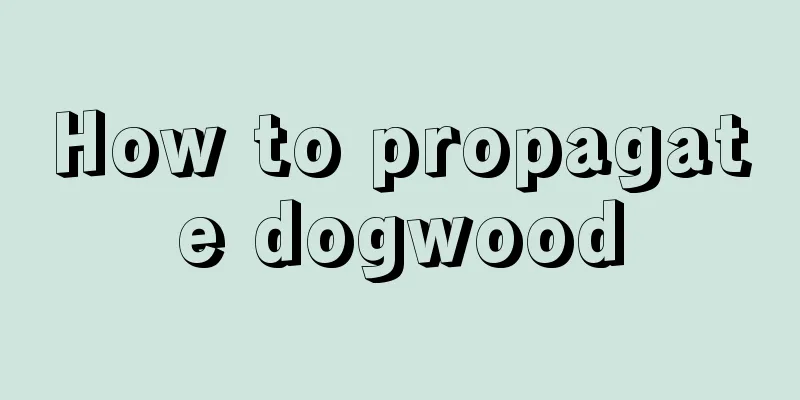Cultivation methods and maintenance of old ginkgo stumps

How to grow ginkgo into an old pileOld ginkgo stumps are a relatively long-lived tree species. Their leaves are very beautiful like umbrellas, and their branches are graceful and have a sense of antiquity. After artistic processing and creation, they can become interesting bonsai. And the fruits of the perfect size add points to the entire shape. It is a high-quality material for viewing leaves, fruits, and appreciating the artistic conception. Old ginkgo stumps can be dug all year round. Ginkgo old pile cultivation method1. Flower pot: The old ginkgo stump has many roots and occupies a relatively large volume, so you should choose a flower pot that is relatively deep, breathable and well-drained to grow it. 2. Flower soil: Old ginkgo trees are not very demanding on the soil. However, when growing them at home, it is recommended to use sandy soil with high humus content and good air exhalation properties, so that the breeding effect is better. 3. Watering: Old ginkgo trees like moisture, but their roots are afraid of waterlogging, so watering should be timely, but not too frequent. Just keep the soil slightly moist. 4. Fertilization: Old ginkgo stumps grow very vigorously in spring and autumn, and need to be fertilized with thin fertilizers frequently to provide them with nutrients. In winter, you can apply base fertilizer once to allow them to survive the winter smoothly. Pruning old ginkgo treesThe branches of old ginkgo stumps can be pinched when they reach a length of about 15 cm to promote the growth of side branches. During the growth period, the overgrown branches, thin branches, aging and drooping branches, dead branches, and whorled branches should be promptly thinned out to increase light transmittance. The one-year-old branches should be shortened, which has a significant effect on branch rejuvenation and increasing the amount of new branches. Ginkgo old stump potIf the old ginkgo stump is maintained on a desk or windowsill, choose a ceramic or clay flowerpot with a diameter of about 30 cm, a height of 30 cm, and good drainage. If it is placed in the courtyard or balcony for viewing, you can use wooden barrels, small boxes, small tanks, flower pots and other containers. Ginkgo old stump sproutsThe old ginkgo stump will begin to sprout about 15 days after being planted. During the maintenance period, sufficient water needs to be provided to keep the soil moist, but it should not be watered. It also needs to be placed in a bright, scattered light location for maintenance, and remember not to expose it to sunlight. Ginkgo old stump grows aerial rootsThe protruding tumors on the trunk of old ginkgo trees are aerial roots, which are a form of self-protection for the ginkgo tree and play a supporting role. Precautions for the maintenance of old ginkgo stumps1. Maintenance and management: Old ginkgo stumps are light-loving plants and are suitable for being placed in well-ventilated, sufficient light, but relatively humid places. If the light intensity is high in summer, provide shade in time and move indoors for maintenance in winter, but it is best to bury the pot in the soil. 2. Watering: The soil of old ginkgo trees should be kept moist at ordinary times. It should not be too dry, but also not waterlogged. In summer, the temperature is high and the light is strong, and the water evaporates quickly. You can water it in the morning and evening, and spray water appropriately. After autumn, you can control watering. 3. Fertilization: Old ginkgo stumps grow vigorously in spring and summer. You can apply a thin layer of cake fertilizer water every half a month to promote the growth of branches and leaves. Before winter, you can apply organic fertilizer once, such as decomposed bean cake or manure. 4. Repotting: After two years of maintenance, the soil of the old ginkgo stump tends to become compacted and needs to be replaced around the spring equinox. When repotting, you can trim the roots and apply base fertilizer cake crumbs at the bottom of the pot. Pictures of old ginkgo trees |
<<: Cultivation methods and maintenance matters of old piles of Chinese evergreen
>>: Cultivation methods and maintenance of old rose piles
Recommend
Do peas prefer shade or sun?
Do peas prefer shade or sun? Peas are very easy t...
Differences between Rain Tree and Albizia Julibrissin
1. Difference of blades The rain tree has 3-8 pai...
How to take care of the newly bought cactus
1. Postpone watering and fertilizing Cacti have a...
How to make apricot kernels germinate quickly
Apricot kernel germination environment Apricot ke...
What is granular soil?
Introduction to Granular Soil Granular soil is a ...
How often should I water my Christmas cactus in summer?
How often should Christmas cactus be watered in s...
Can I plant a jujube tree at home?
Can I grow a jujube tree at home? It is okay to p...
When should I repot calamus?
The best time to repot If you are already an expe...
How many kilograms of purple sweet potato are generally produced per mu? Planting cost and income analysis
Purple sweet potato yield per mu The yield per mu...
Garlic seedling planting method and time
Garlic seedlings suitable planting time Garlic se...
How and when to plant mustard tuber? Which month is the best for planting?
Suitable planting time for mustard tuber The plan...
Is it normal for orchid leaves to curl after being potted? How to deal with it after potting
1. Is it normal? It is normal for leaves to curl ...
How to treat lucky bamboo with insects? What medicine to use if it has insects?
1. Red spider Red spider mites mainly suck the ju...
How to cultivate feicai
sowing Feicai can be cultivated by planting from ...
Planting and Management of Pomegranate Trees
Pomegranate has rich nutritional value and divers...









